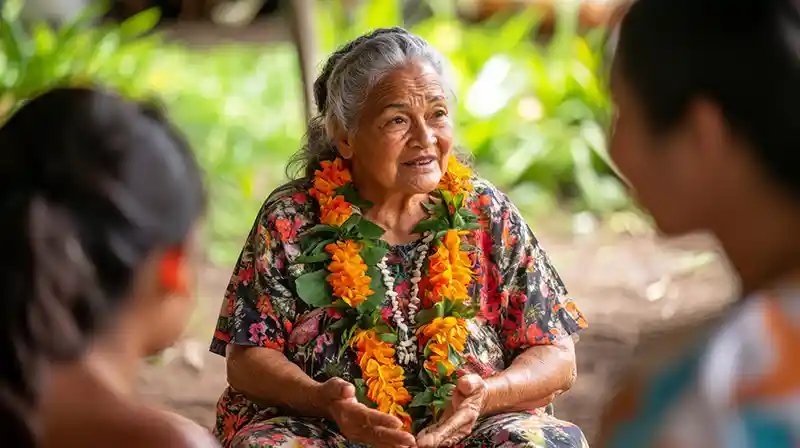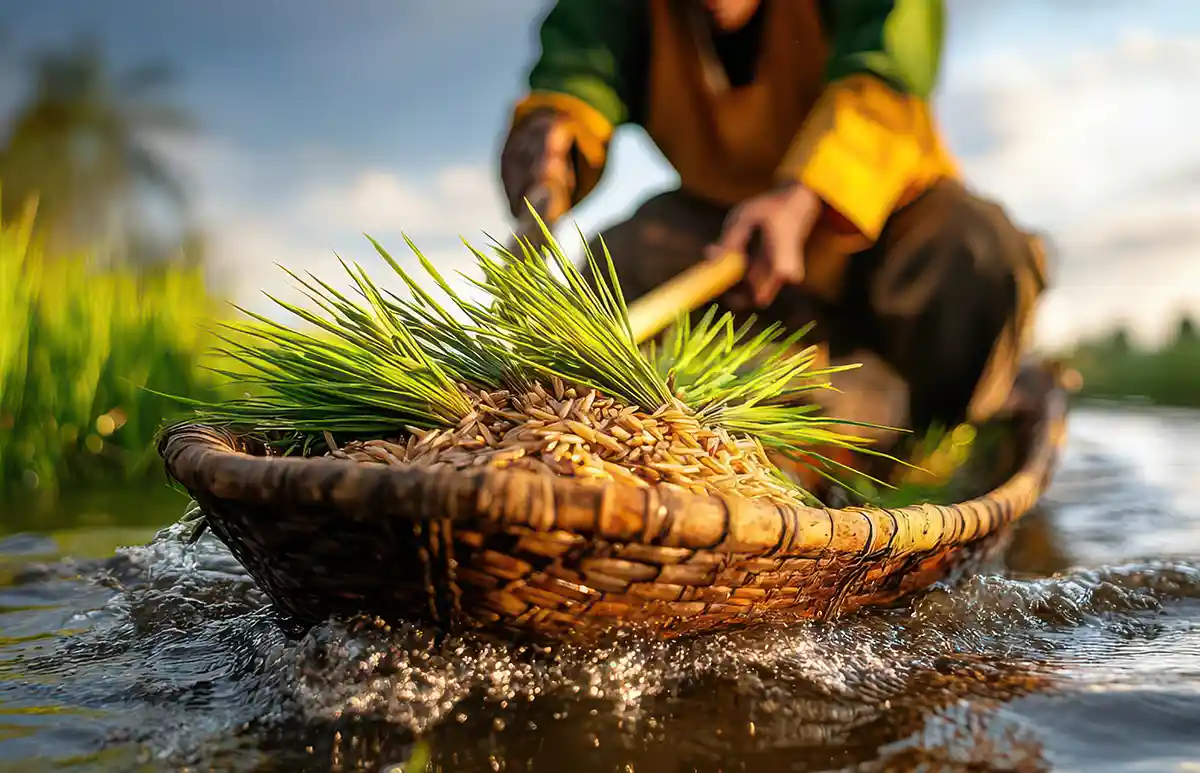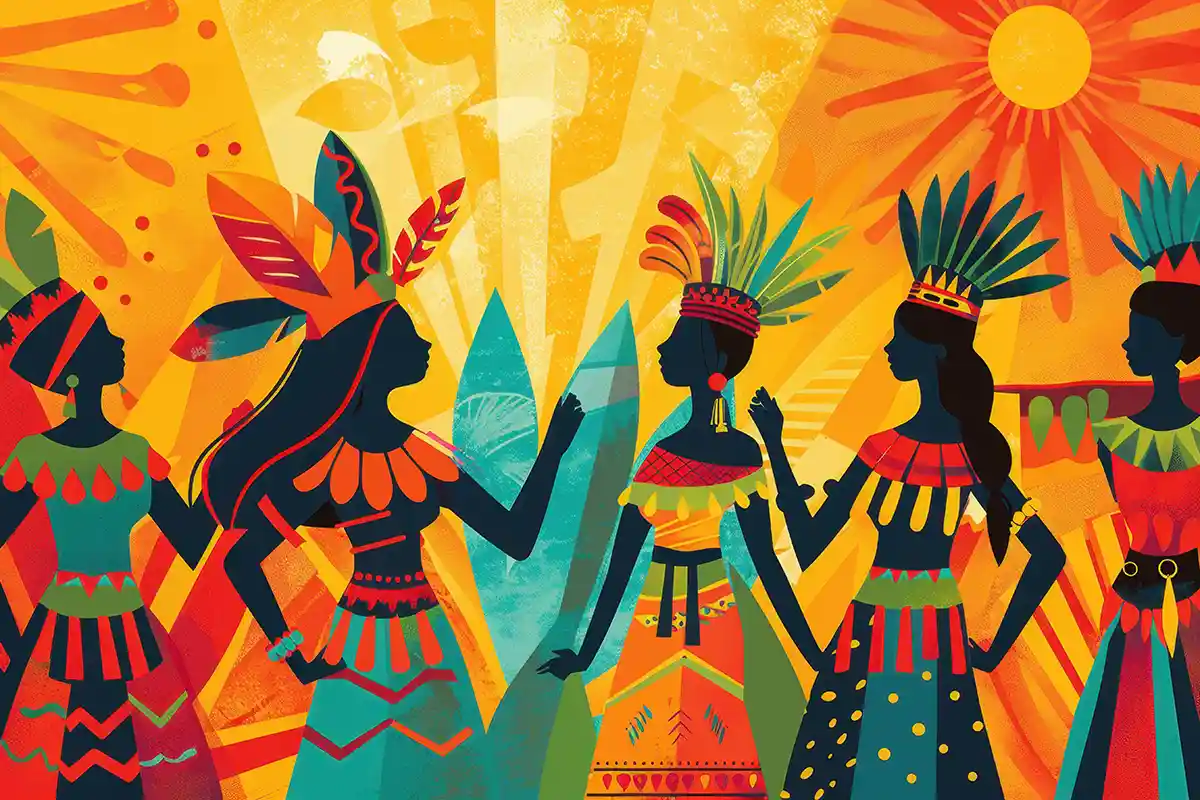Signature Collections: Language & Culture
The Extraordinary Successs of Hawaiian Language Revitalization: How ʻĀina-Based Education is Reconnecting Language, Land, and Culture
February 20, 2025
(Part 1 of 4)🌱 The Extraordinary Successs of Hawaiian Language Revitalization: How ʻĀina-Based Education is Reconnecting Language, Land, and Culture
For centuries, Hawaiian was the primary language of the islands, spoken fluently by all. However, beginning in the late 18th century, genocidal and colonizing policies—including disease, forced displacement, and the banning of Hawaiian in schools—devastated the language and its people.
A Language Once Silenced by Genocidal and Colonizing Policies, Now Thriving
By the 1890s, the Indigenous Hawaiian population had plummeted from an estimated 800,000 to just 40,000, largely due to white-introduced diseases like syphilis, influenza, and tuberculosis, as well as the violent suppression of Hawaiian culture (Silva, 1998). This systematic erasure was not accidental—it was part of a larger colonial effort to obliterate Indigenous identity and replace it with Western norms. Hawaiians were blamed for their own demise, despite clear historical evidence of external oppression (Silva, 1998).
By the 1980s, Hawaiian was on the brink of extinction, with fewer than 50 fluent child speakers remaining. But the community fought back.
Through grassroots efforts, language immersion programs like ʻAha Pūnana Leo and Hawaiian medium schools reclaimed the language from the edge of extinction. Today, thousands of children are learning and living in Hawaiian, marking one of the most significant Indigenous language revitalization successes in history.
Yet, true revitalization means ensuring the language thrives beyond the classroom—in the land, in daily life, and in the wisdom of ancestors. This is where ʻĀina-Based Education plays a vital role in sustaining and deepening language learning for future generations.

🌿 Three Things We Love About ʻĀina-Based Education
-1- Language Comes to Life Through Hands-On Learning.
Hawaiian isn’t just a subject—it’s a way of life.
Rather than sitting at a desk memorizing vocabulary, students learn through real-world experiences:
- 🌱 In the loʻi kalo (taro fields): They practice Hawaiian as they plant, weed, and harvest.
- 🌊 On the waʻa (canoe): They learn navigation terms while sailing like their ancestors.
- 🌬️ In the forest: They chant Hawaiian prayers and use traditional plant names.
Why it works:
• Learning by doing increases fluency and retention.
• The language is learned in its cultural and ecological context, making it more meaningful.
• It fosters a deep emotional connection to both language and land.
-2- Strengthening Generational Bonds Through Intergenerational Learning
Language thrives when elders, adults, and children learn together.
Kupuna (elders) are the carriers of traditional knowledge, and their wisdom is essential for revitalization. ʻĀina-Based Education creates natural spaces for these connections to happen.
- 🌺 A kupuna teaches children the Hawaiian names for plants as they walk through the forest.
- 🌊 A grandfather and grandchild fish together while speaking Hawaiian about ocean tides.
- 🌱 A family gardens together,reviving agricultural terms that were once nearly lost.
Why it works:
• Kupuna serve as both language and cultural teachers, ensuring knowledge transmission.
• Families strengthen their bonds, making language a living part of home life.
• The language is used naturally—not just in classrooms, but in daily interactions.

-3- Rooting Identity in Place Through Cultural and Ecological Knowledge
A single Hawaiian word can carry centuries of history, genealogy, and environmental wisdom.
ʻĀina-Based Education ensures that students don’t just speak the language—they understand its deep connection to place.
- 🏔️ Place names (inoa ʻāina) tell stories of ancestors and environmental changes.
- 🌊 Weather terms (kaona) teach about climate and sacred relationships with nature.
- 📖 Oral histories (moʻolelo) reveal the cultural and spiritual significance of each place.
Why it works:
• Language is not just a tool for communication—it is a worldview.
• Learning through place-based knowledge restores cultural identity.
• Students gain a stronger sense of belonging—to their land, their ancestors, and their future.
✨ A Model for Indigenous Language Revitalization Worldwide
Hawaiian language revitalization is a global inspiration. It has proven that even languages once thought to be on the brink of extinction can thrive again.
But the journey is not over.
For Hawaiian—and all Indigenous languages—to not only survive but flourish, they must be deeply woven into daily life, cultural practices, and community traditions.
That is why ʻĀina-Based Education is not just a method—it’s a movement.
- ✅ It strengthens fluency through real-world immersion.
- ✅ It connects generations, ensuring knowledge is passed down.
- ✅ It roots language in land, reinforcing identity and ecological knowledge.
🚀 Want to learn more? Click below for part 2
"Land is Our Teacher: How ʻĀina-Based Education Supports Indigenous Language Reclamation"
References:
Kahakalau, Kū. “Ancient Is Modern—Transforming Public Education for Hawaiians.” The Value of Hawaiʻi 3: Hulihia, the Turning, edited by Noelani Goodyear-Ka‘ōpua et al., University of Hawai’i Press, 2020, pp. 271–74. JSTOR, https://doi.org/10.2307/j.ctv1pncr2m.66. Accessed 20 Feb. 2025.
Kaomea, Julie. “Indigenous Studies in the Elementary Curriculum: A Cautionary Hawaiian Example.” Anthropology & Education Quarterly, vol. 36, no. 1, 2005, pp. 24–42. JSTOR, http://www.jstor.org/stable/3651307. Accessed 20 Feb. 2025
ALOHA+ CHALLENGE | Green Workforce and Education 01 | ʻĀina-Based Education & Community Engagement
Connect With Us
Follow our journey, share your thoughts, and participate in the conversation. Let's keep languages vibrant together.
Languages 4™ is more than a tool; it's a partner in the mission of preserving and revitalizing Indigenous languages. We invite reach out to us explore how our platform can support your language teaching goals. [Join the Conversation 📩 Subscribe to our Newsletter ] and take a step towards sustaining the rich heritage of Indigenous languages.

Tim O'Hagan
Founder and President, Languages 4®
Ready to embark on this transformative linguistic journey? Dive in and experience the confluence of tradition and innovation as we reimagine the future of Indigenous language learning.
[Join the Conversation to Subscribe to our Newsletter ]

